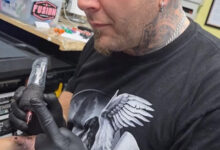
World
Japanese, Korean, and European washing machines each reflect the specific needs`
Japanese, Korean, and European washing machines each reflect the specific needs and preferences of their regions, with differences in design, technology, and user experience.
1. Design and Configuration
- Japanese Washing Machines: Japanese washing machines are typically top-loading and designed to be compact to fit into smaller homes or apartments. The focus is on space efficiency and ease of use. They often include in-built dryers and can be lighter and simpler in design, catering to the need for frequent, smaller loads in Japanese households.
- Korean Washing Machines: In Korea, front-loading washing machines are dominant. Brands like LG and Samsung prioritize sleek, modern designs with an emphasis on both aesthetics and functionality. Korean machines often come with advanced technology, offering large capacity for bigger loads and smart features like app control, voice commands, and AI-powered wash cycles. These machines also tend to focus on high efficiency and shorter wash times.
- European Washing Machines: European machines are predominantly front-loading, reflecting a focus on energy and water efficiency. They are typically larger and built to comply with strict EU environmental regulations, offering longer wash cycles but with highly effective and eco-friendly results. The emphasis is on optimizing energy use, often incorporating advanced sensors to tailor water and detergent use to each load.
2. Energy and Water Efficiency
- Japanese Washing Machines: Japanese washers are known for their water-saving features, often recycling water from one cycle to the next. However, they may not always be as energy-efficient as their front-loading counterparts found elsewhere, though they do prioritize low water usage due to Japan’s limited water resources.
- Korean Washing Machines: Korean machines, particularly from LG and Samsung, lead the way in energy efficiency. Technologies like EcoBubble and TurboWash allow effective cleaning at lower temperatures, conserving both water and electricity. They also offer faster spin cycles, reducing drying time and energy consumption.
- European Washing Machines: European washers are some of the most energy-efficient in the world, often featuring A+++ ratings. They are designed to use minimal water and energy, with features like heat pump drying and steam cycles that reduce resource consumption while maintaining cleaning performance.
3. Technological Features
- Japanese Washing Machines: Japan’s washers often include simple, practical features, such as quick wash settings and gentle cycles for delicates. They may not be as tech-heavy as their Korean counterparts but emphasize user convenience and space-saving designs.
- Korean Washing Machines: Korean washers are tech-forward, offering smart features like remote control via smartphone apps, Wi-Fi connectivity, and AI-driven wash programs that adapt to load size and fabric type. Many models are also equipped with voice control and self-diagnosis systems for easy maintenance.
- European Washing Machines: European machines prioritize sensor technology and long-term efficiency. Features like load-sensing systems, self-cleaning, and steam cycles ensure effective cleaning with minimal energy use. Many models also offer eco-friendly settings that extend wash times but lower energy and water consumption significantly.
Read also: Rowing Machine Secrets: Perfecting Your Workout with Damper Settings
4. User Preferences
- Japanese consumers prioritize compact, practical machines for frequent, small loads.
- Korean consumers prefer advanced, tech-savvy models that blend aesthetics with functionality.
- European consumers emphasize environmental sustainability and energy efficiency, tolerating longer cycles for the sake of better resource use.
In conclusion, Japanese washing machines are compact and water-efficient, Korean machines are tech-centric and feature-packed, and European washers prioritize energy efficiency and sustainability.






